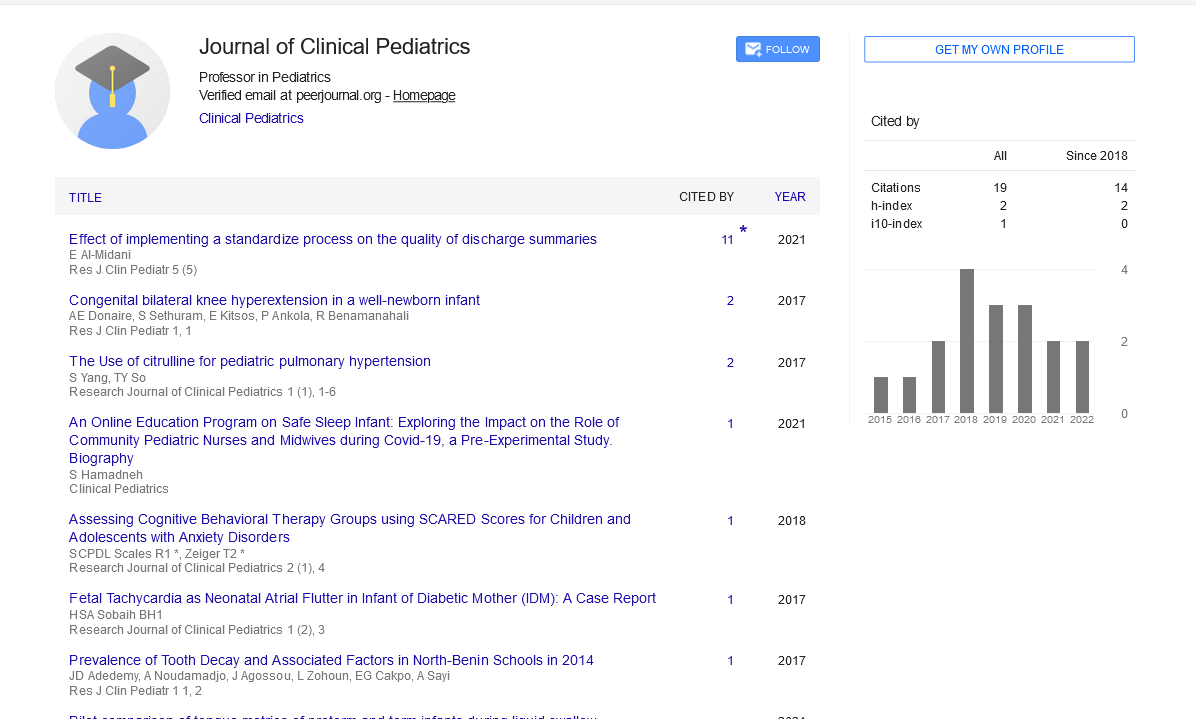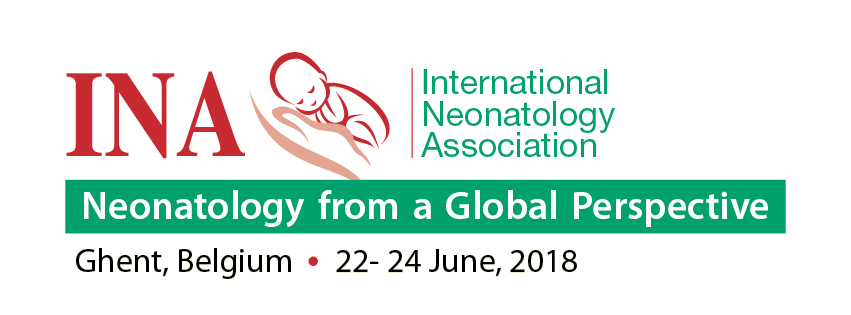Perspective, Res J Clin Pediatr Vol: 7 Issue: 2
Detection and Treatment of Hematologic Diseases in Children
Susan Moran*
Department of Precision Medicine, Sapienza University, Rome, Italy
*Corresponding Author: Susan Moran Department of Precision Medicine, Sapienza University, Rome, Italy E-mail: susan_moran@su22.it
Received date: 22 May, 2023, Manuscript No. RJCP-23-105494;
Editor assigned date: 25 May, 2023, PreQC No. RJCP-23-105494 (PQ);
Reviewed date: 08 June, 2023, QC No. RJCP-23-105494;
Revised date: 15 June, 2023, Manuscript No. RJCP-23-105494 (R);
Published date: 22 June, 2023, DOI: 10.4172/Rjcp.1000141
Citation: Moran S (2023) Detection and Treatment of Hematologic Diseases in Children. Res J Clin Pediatr 7:2.
Description
Hematologic disorders encompass a wide range of conditions affecting the blood and blood-forming organs in children. These disorders can significantly impact a child's overall health and require prompt and accurate diagnosis for appropriate management. Anaemia, characterised by a decrease in the number of red blood cells or haemoglobin levels, is one of the most common hematologic disorders in children. The diagnosis involves a thorough medical history, physical examination, and blood tests such as a Complete Blood Count (CBC) and iron studies. Treatment options depend on the underlying cause and may include iron supplementation, blood transfusions, or medications targeting specific deficiencies.
Thalassemia is a group of inherited blood disorders characterised by reduced or absent production of specific globin chains of haemoglobin. Diagnosis involves haemoglobin electrophoresis, genetic testing, and CBC. Management includes regular blood transfusions, iron chelation therapy, and, in severe cases, bone marrow transplantation. Haemophilia is an inherited bleeding disorder characterised by a deficiency or absence of clotting factors. Diagnosis involves a detailed medical history, a physical examination, and laboratory tests such as coagulation factor assays. Management includes the administration of specific clotting factor concentrates, prophylactic treatment to prevent bleeding episodes, and education on injury prevention.
Idiopathic Thrombocytopenic Purpura (ITP) is an autoimmune disorder characterised by low platelet counts and increased bleeding tendencies. A diagnosis involves a medical history review, a physical examination, and blood tests, including a CBC and an examination of a blood smear. Treatment options range from observation to medications such as corticosteroids, Intravenous Immunoglobulins (IVIG), or, in refractory cases, splenectomy. Sickle Cell Disease (SCD) is a genetic disorder that affects haemoglobin, leading to the production of abnormally sickle-shaped red blood cells. The diagnosis involves haemoglobin electrophoresis, CBC, and genetic testing. Management includes regular follow-up, pain management during sickle cell crises, prophylactic penicillin, vaccinations, and hydroxyurea therapy to reduce the frequency of complications.
Pediatric hematologic malignancies, such as leukaemia and lymphoma, require early diagnosis and prompt initiation of treatment. Diagnosis involves a combination of clinical history, physical examination, blood tests, bone marrow aspiration, and biopsy. Treatment modalities include chemotherapy, radiation therapy, immunotherapy, and stem cell transplantation, depending on the specific malignancy and risk stratification.
Bone marrow failure syndromes, including Aplastic anaemia and Fanconi anaemia, are characterised by inadequate production of blood cells. Diagnosis involves bone marrow examination, chromosomal studies, and genetic testing. Management options include immunosuppressive therapy, growth factors, and bone marrow transplantation in severe cases. Haemophilia A and B are characterised by deficiencies in clotting factors VIII and IX, respectively. Diagnosis involves measuring factor VIII or IX levels through specific coagulation factor assays. Treatment strategies primarily revolve around factor replacement therapy, either on-demand or as prophylaxis to prevent bleeding episodes. Recombinant factor concentrates or plasma-derived factors are used for replacement therapy.
Disseminated Intravascular Coagulation (DIC) is a complex disorder characterised by abnormal clotting and bleeding occurring simultaneously. It often occurs as a complication of severe infections, trauma, or certain underlying conditions. Diagnosis involves clinical assessment, coagulation tests, and laboratory findings indicating abnormal clotting factors, platelets, and fibrinogen levels. Treatment focuses on addressing the underlying cause along with supportive measures such as blood component transfusions, anticoagulant therapy, and management of organ dysfunction.
Various coagulation disorders, such as von Willebrand disease and factor deficiencies, can affect children. Diagnosis involves medical history, physical examination, and laboratory tests, including coagulation factor assays and genetic testing. Treatment strategies focus on replacing deficient clotting factors and, in some cases, desmopressin administration.
Conclusion
Diagnosing and managing hematologic disorders in children requires a multidisciplinary approach involving paediatricians, haematologists, nurses, and other healthcare professionals. Early and accurate diagnosis is essential to initiating appropriate treatments and improving outcomes for affected children. Advances in genetic testing, targeted therapies, and supportive care have revolutionised the management of hematologic disorders, providing children with a better quality of life and a better long-term prognosis. Continued studies and collaboration are important to further enhance understanding and treatment options for paediatric hematologic disorders.
 Spanish
Spanish  Chinese
Chinese  Russian
Russian  German
German  French
French  Japanese
Japanese  Portuguese
Portuguese  Hindi
Hindi 
